French Flander
Where Flemish is spoken
Text by Michel Lebreton
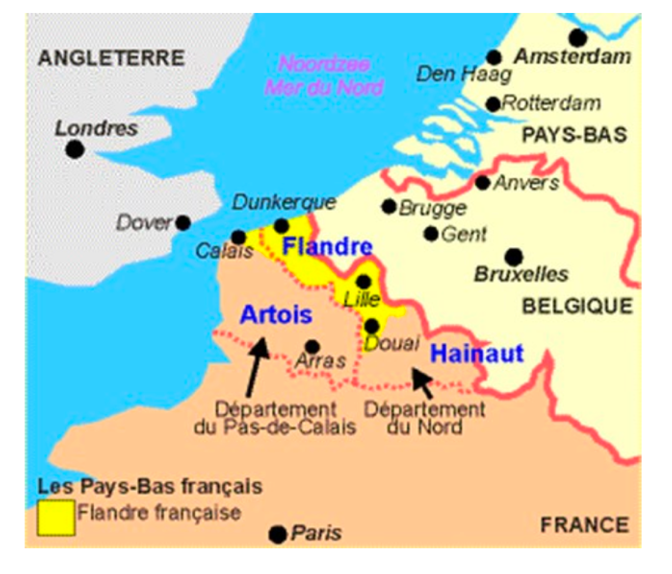
“French Flanders” (in bright yellow on the map) refers to the part of the former County of Flander that is now under French administration. Since the County of Flanders has always been bilingual—crossed by the internal linguistic border since the Middle Ages—”French Flander” includes both a Roman-speaking area (Lille, Roubaix, Douai, Armentières), where the traditional dialect is Picard (a dialect of the Langue d’oïl group, related to French), and a Flemish-speaking area, where Flemish was traditionally spoken. This latter area corresponds to the French Westhoek (literally “western corner”), including towns such as Dunkerque, Cassel, Hazebrouck, and Bailleul.”
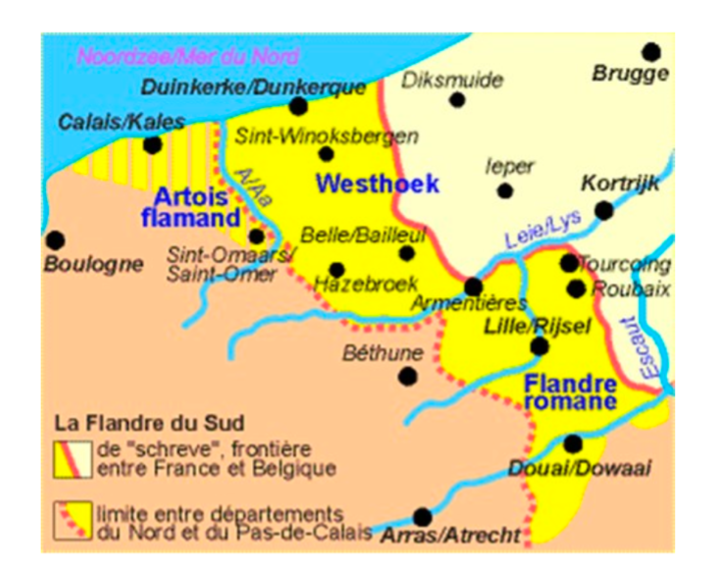
” In the 21st century, the French Westhoek is the only territory in France that has traditionally been Dutch-speaking. It is the small portion of what was once Flemish-speaking Flander, now within French borders, where a local variety of West Flemish dialect is spoken. ” https://fr.wikipedia.org/wiki/Westhoek_fran%C3%A7ais
” It is estimated that around 20,000 people speak Flemish fluently in French Flanders. Around 50,000 others are said to speak it occasionally. Most of these speakers are elderly, but since 2010, several towns have been reintroducing the teaching of the language—at least of Dutch—in Dunkerque, Bailleul, Halluin, and Lille. ” Source : Journal la Voix du Nord, 20/01/2024
A Public Office for occidental Flemish is expected to be established in 2025. Its mission will be to preserve the Flemish language and promote its culture.
Historical background
1 – Festivals and Fairs in the Time of the Brueghels
Flemish painters of the 16th and 17th centuries have left numerous testimonials of the festive customs of their time. Through their work, we also discover popular musical and dance traditions. Here are a few examples:
• Pieter Brueghel
• David Teniers
• The Peasant Wedding
• The Blind Hurdy-Gurdy Player
• Village Fair (Kermesse)
• The Battle Between Carnival and Lent
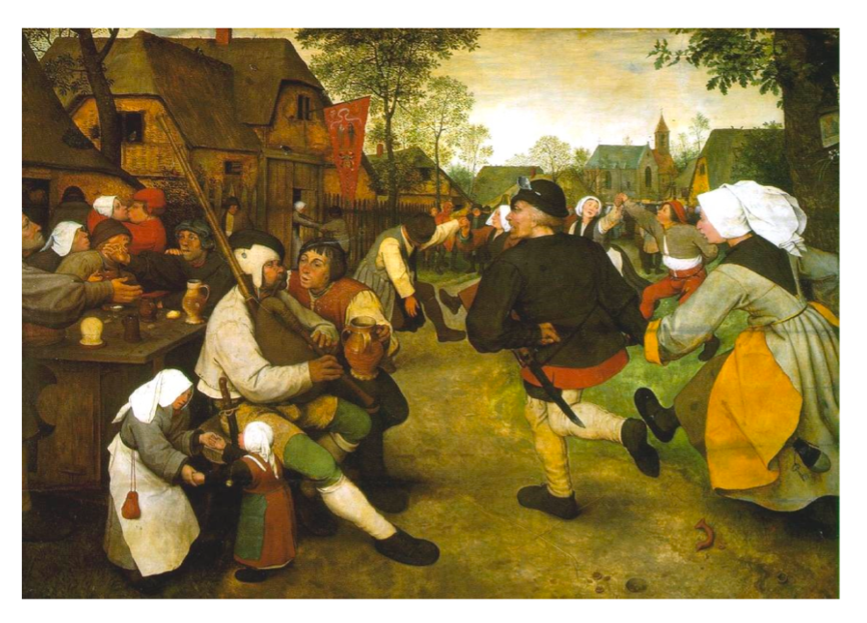
2 – (Song) Collectings in the 19th Century
In the mid-19th century, during the Romantic movement, the literati began to take an interest in what some referred to as the “sung poetry of the rural common folk.” The term folklore was adopted by collectors to describe the customs and traditions of the peasantry.
Edmond de Coussemaker, a politician and musicologist born in 1805, in Bailleul, French Flanders, became passionate about the folklore of the region. With the help of several local correspondents, he organized a collecting of popular songs, published in 1856. This work remains a key reference today.
A selection of the songs transcribed into MIDI files can be found here.
His work was so influential that no further research on Flemish songs was carried out for a long time. It wasn’t until the folk revival of the 1970s, with a study by ethnomusicologist and anthropologist André-Marie Despringre, that a wide array of musical traditions was rediscovered.
Feast in Flander
Useful resource : “Fête en Flandre : rites et chants populaires du Westhoek français”, 1975-1982, Paris, Institut d’Ethnologie, Musée de l’Homme, 188 p.
André-Marie Despringres investigates during this period and described festivals and rituals in which music and singing play a major role. Here are a few examples from his book:
• Carnivals and their music, many of which are still very much alive today:
Dunkerque and its “Visscherbende” (fishermen’s band): in the 19th and early 20th centuries, the carnival was subsidized by shipowners whose fleets left for Iceland to fish for herring. Before departure, they would offer fishermen a grand celebration. Although this fishing practice has disappeared, the carnival revived its “fishermen’s band” twice after the two world wars. Today, it is still going strong. Music is performed by French fife and drum bands whose origins trace back to Napoleonian military music. Brass bands also take part of the festivities.
To discover:
- A bit of history and photos: https://www.les-plats-pays.com/article/la-visscherbende-une-bande-de-pecheurs-flamands-a-lorigine-du-carnaval-de-dunkerque/
- Cassel and its giant, Reuze: https://www.youtube.com/watch?v=ciecC98Otcg
- Reuze Papa is the protector of the town of Cassel. The town’s band plays the Reuze tune, which you can hear played on the carillon here: https://www.facebook.com/LIHF.flandre/videos/de-reuze-lied-pour-ceux-qui-nauraient-jamais-vu-jouer-un-carillonneur/364333448642089/
- Many towns in Flanders have a belfry with a carillon: https://www.youtube.com/watch?v=T58sUiqxC9M
• Festivals – two examples among many:
Saint Martin’s Day: legend says that while Saint Martin was evangelizing Flanders, he lost his donkey. The local children found it, and to thank them, Saint Martin transformed the donkey’s droppings into small loaves of bread called “follards”. To commemorate the event, each year on Saint Martin’s Day (celebrated on November 10), all towns and villages across Flanders hold parades where children sing and carry lanterns carved out of beets. Four songs for Saint Martin’s day : https://www.youtube.com/watch?v=zETL9GNEMHw
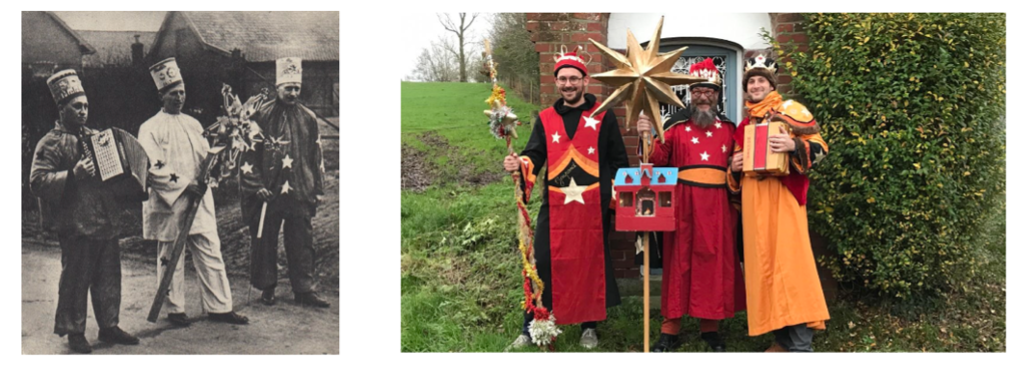
Revivalism
rediscovery of repertoires and re design of traditional instruments
Singing
As in all traditions, singing was omnipresent in the former Flemish society. Here are a few examples performed by contemporary groups. These are sea shanties:
• MARIEKE [Het Reuzekoor] sings “Het Afzyn” (The Absence):
This song recounts an episode from the fishing expeditions to Iceland, and the six-month separation between young women and young sailors.
• LA BRICOLE – Maritime Songs from the Boulonnais region: “Ne vous faites pas marin” (Don’t Become a Sailor) Lyrics copied aboard the submarine Rageot de la Touche in Cherbourg on December 21, 1923. Sung by Mrs. Roux and Mrs. Lebas in Étaples, March 1988.
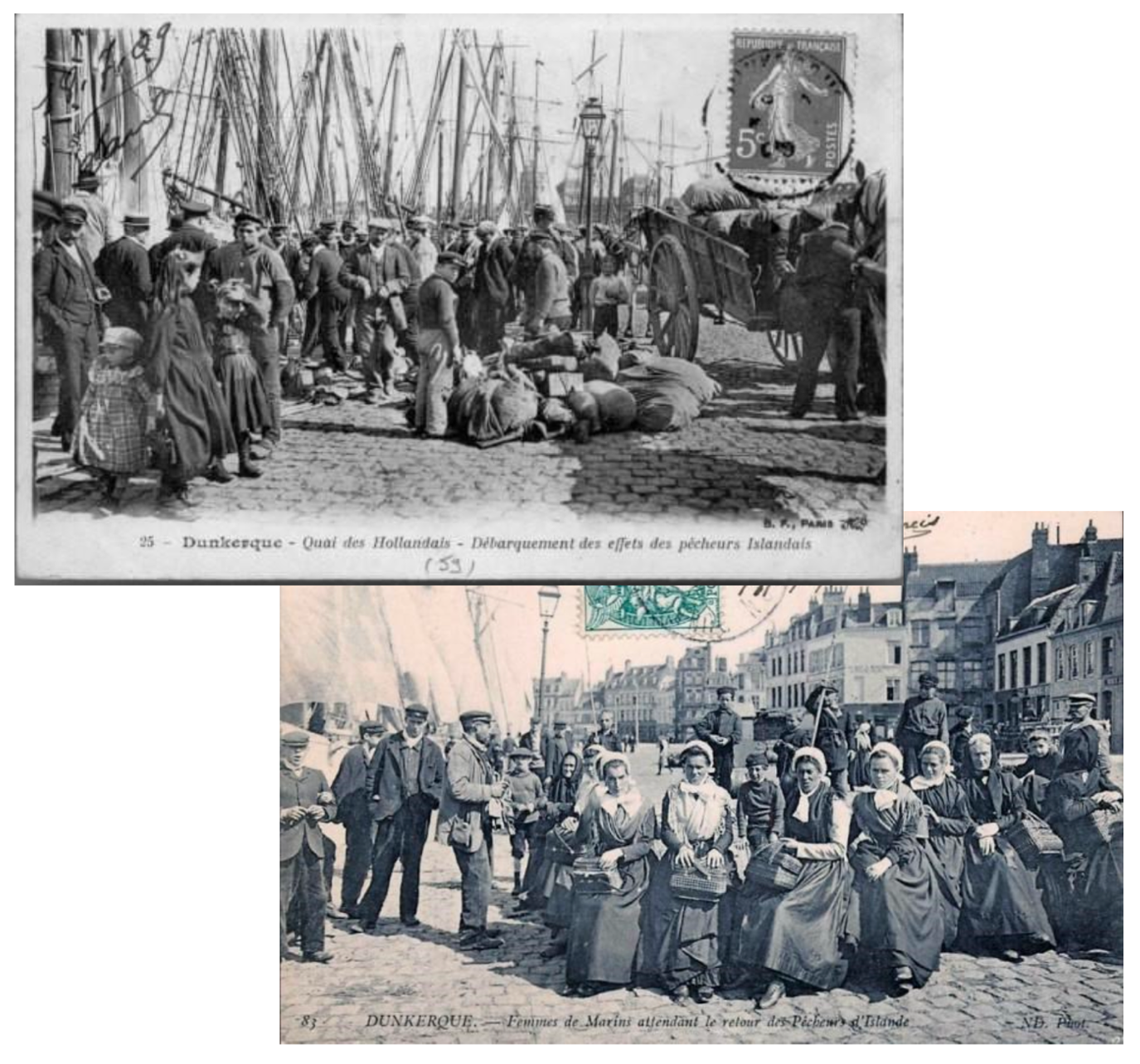
Dance
The dances collected by the revivalists of the folk movement in the 1970s are mainly partner dances and figure dances. This repertoire comes from the folk balls of the late 19th and early 20th centuries.
Here are three examples of dances performed by contemporary groups:
- La Pieternelle (Shillelagh): https://www.youtube.com/watch?v=-DG1agjKtbQ
- La Schommelwals: https://www.youtube.com/watch?v=80ycU7zeueU
- Le Horlepiep (Het Reuzekoor): https://www.youtube.com/watch?v=lnVCG2QLogs
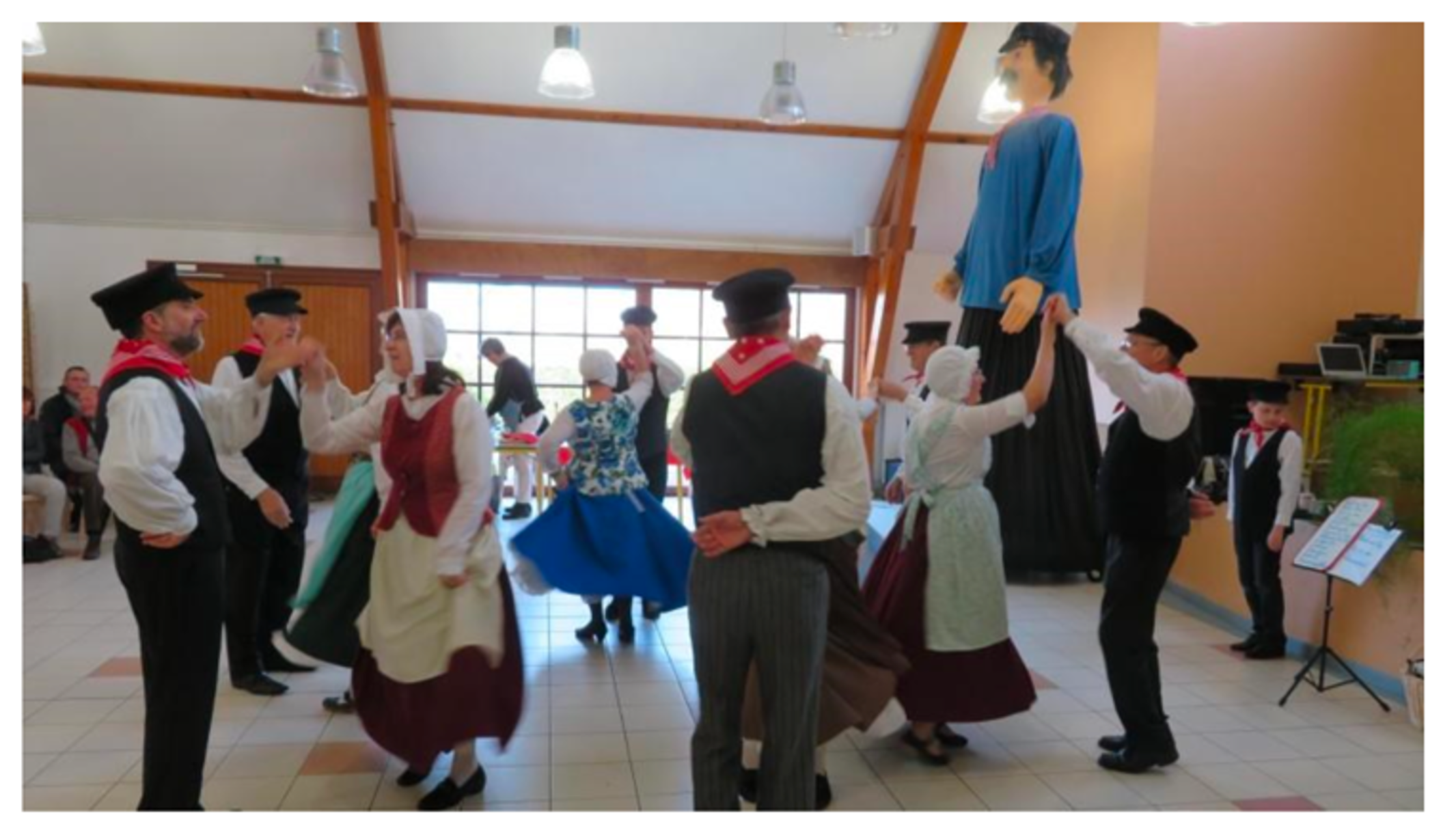
The bagpipe
Doedelsack or doedelzak (bagpipe)
The Flemish bagpipe is a modern re design, as no original examples have survived. Instrument makers drew inspiration from 16th– and 17th-century paintings for the external appearance, especially the two distinctive forward-facing drones. To reproduce the sound, they studied other types of bagpipes, particularly those from Berry, in Central France. The bagpipes played today in French Flander and Belgian Flander are very similar, and often identical.
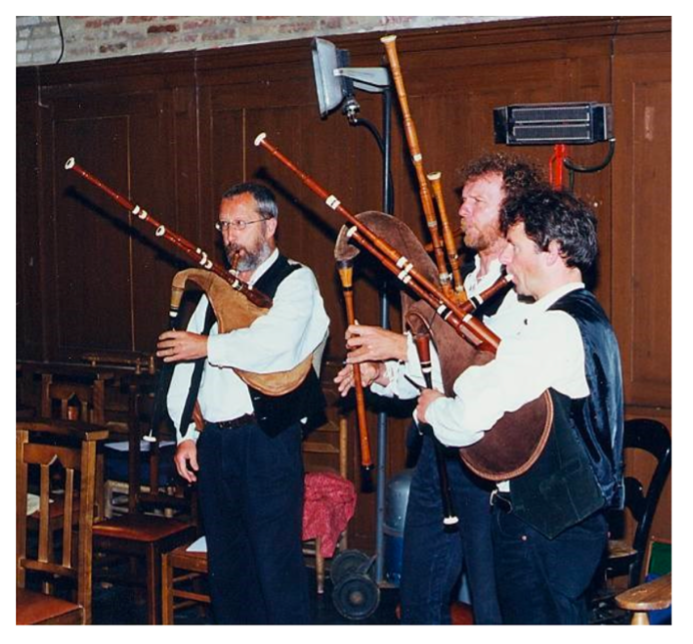
To discover :
- HET REUZEKOOR — Sint Anna Feest, French Flanders
- TRIO ARJAUN DU PAJOTTENLAND (Belgium)
- HUBERT BOONE – Traditional Music from Belgian Flanders
- TRADITIONAL FOLK MUSIC FROM FLANDERS – Vinyl reissue by the group “De Vlier” from Nederokkerzeel (Belgium). Most of the melodies originate from Belgian Flanders, a culture very close to that of French Flanders.
- Side A — “2 narrendans” (Fool’s Dance) – Western Flanders. Played on the large bagpipe, with violin and big tambourine accompaniment (2’35’’)
- “ON THE BORDERS” — MICHEL LEBRETON Nieuwjaarslied (Christmas song from Belgian Flanders)
The hurdy-gurdy
Draaillier (hurdy-gurdy)
The hurdy-gurdy used by contemporary bands is borrowed from the provinces of Berry and Bourbonnais in Central France. As with the bagpipe, the tradition has not survived to the present day.
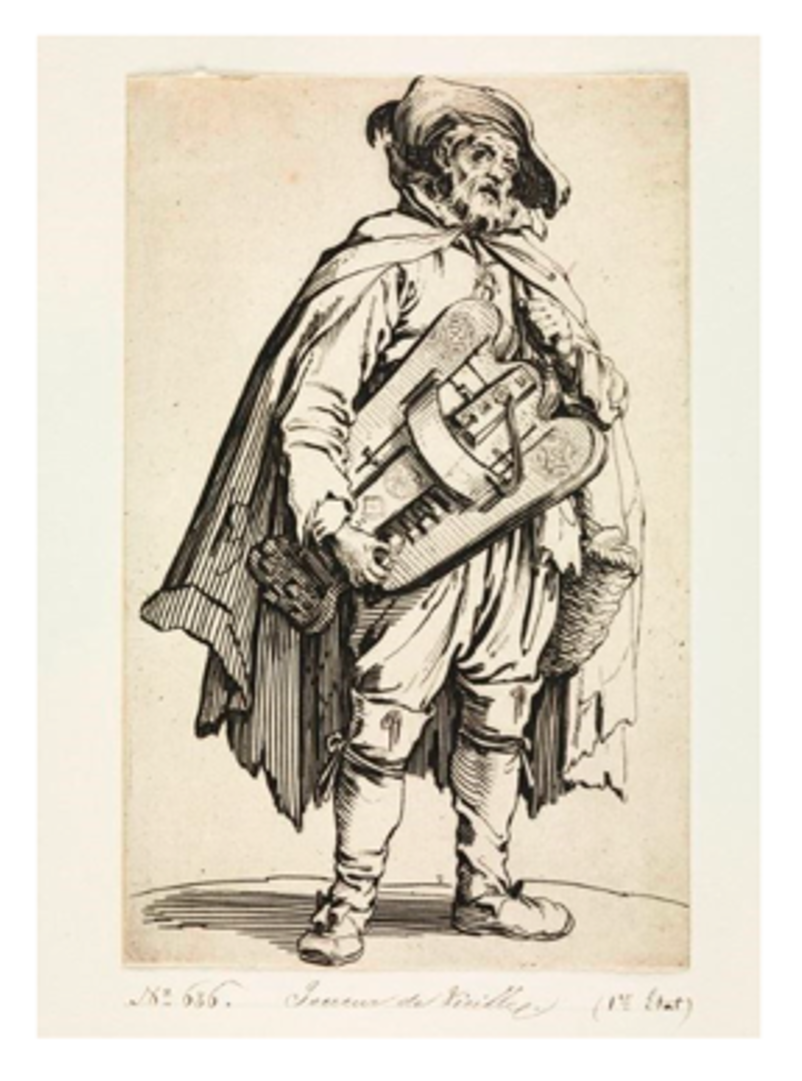
CLAUDE FLAGEL – HUBERT BOONE – Flemish Folk Tunes (Belgium) : Duo for hurdy-gurdy and large bagpipe
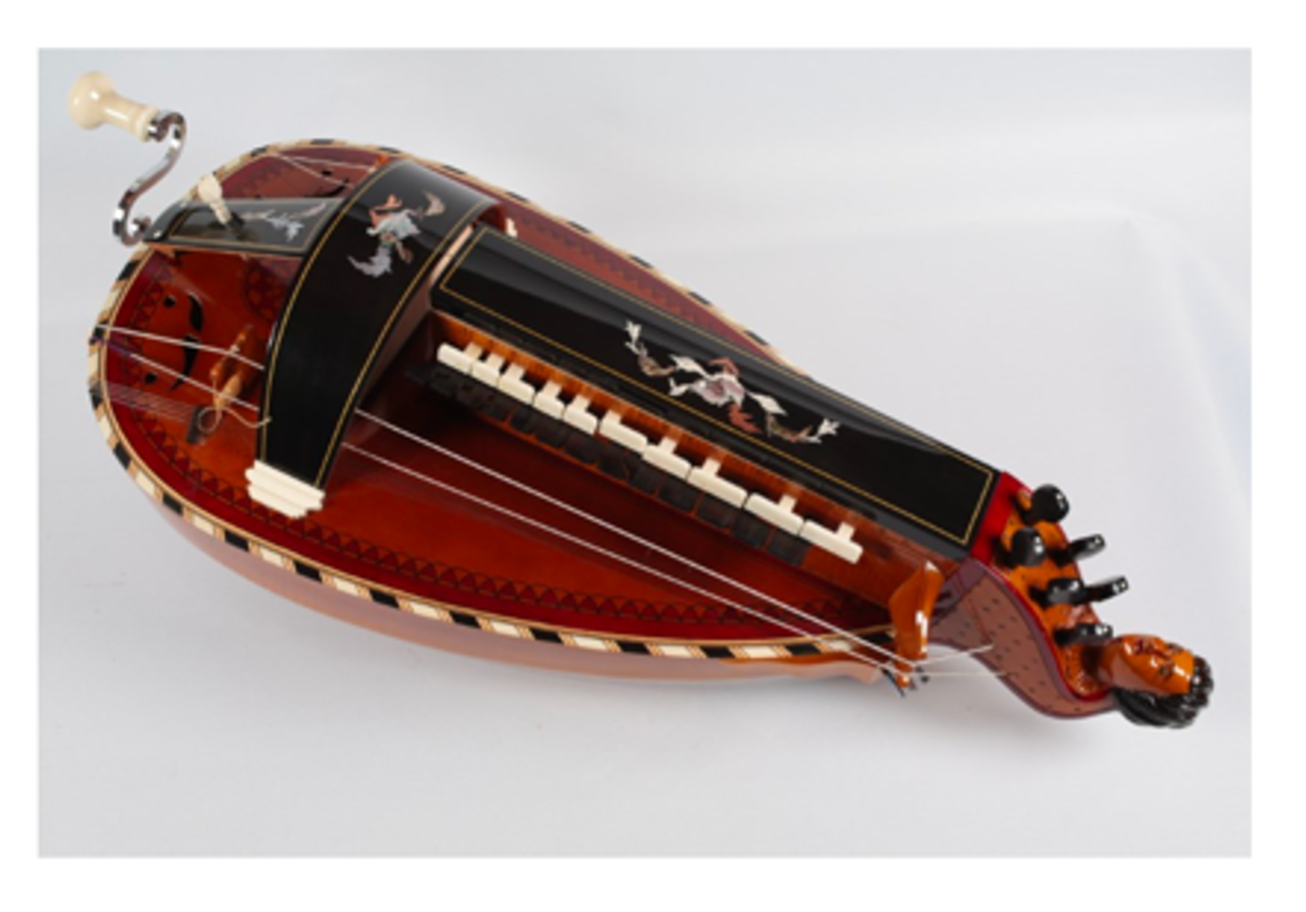
ALFRED DEN OUDEN, GÉRALD RYCKEBOER, LODE BUCSAN – Fin De Boeuf / Moeder Porret
Moeder Porret is taken from the collection by Edmond de Coussemaker. You can hear it at 2:26.
The violon and the diatonic accordeon
Present in many regions, these instruments were widely used to liven up dances and festivals.
TRADITIONAL FOLK MUSIC FROM FLANDERS – Vinyl reissue by the group “De Vlier” from Nederokkerzeel (Belgium)
Side A: 5 Sint Krispijn (Saint Crispin) – Tune of the Shoemakers’ Guild (Saint Crispin) of Dendermonde (8’58’’)
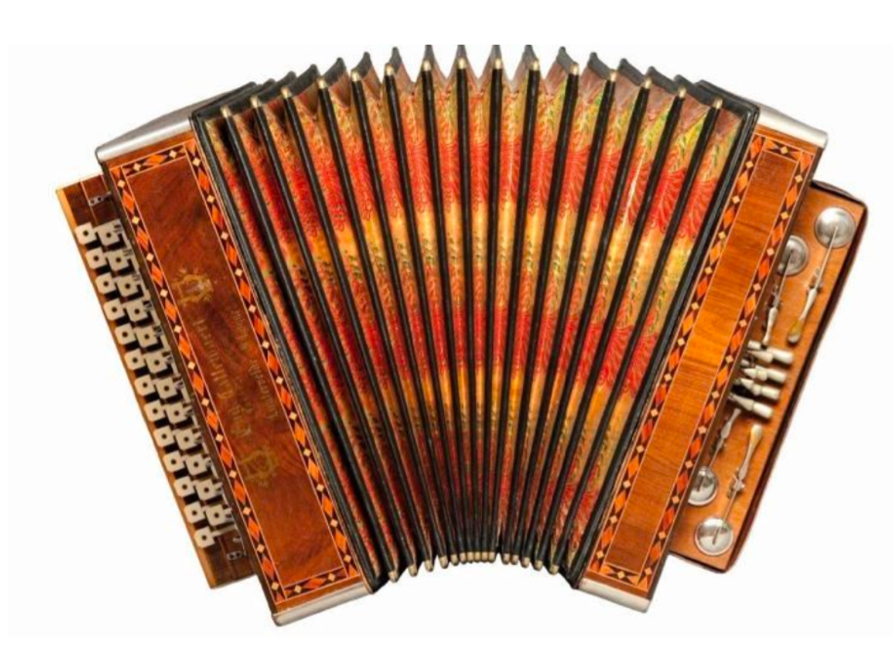
West Flanders (Belgium), 1928
The hommel :
Hommel (fretboard zither)
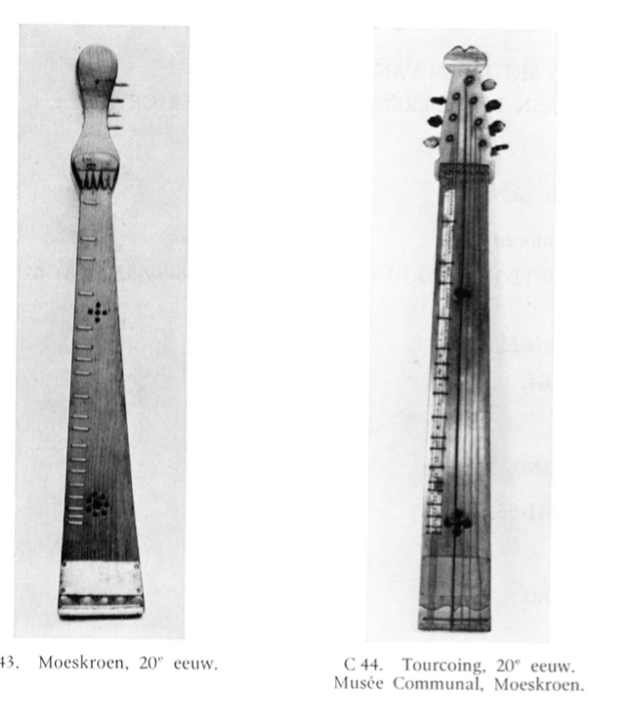
MARIEKE EN BART — Jan Mynen Man, children’s song from French Flanders
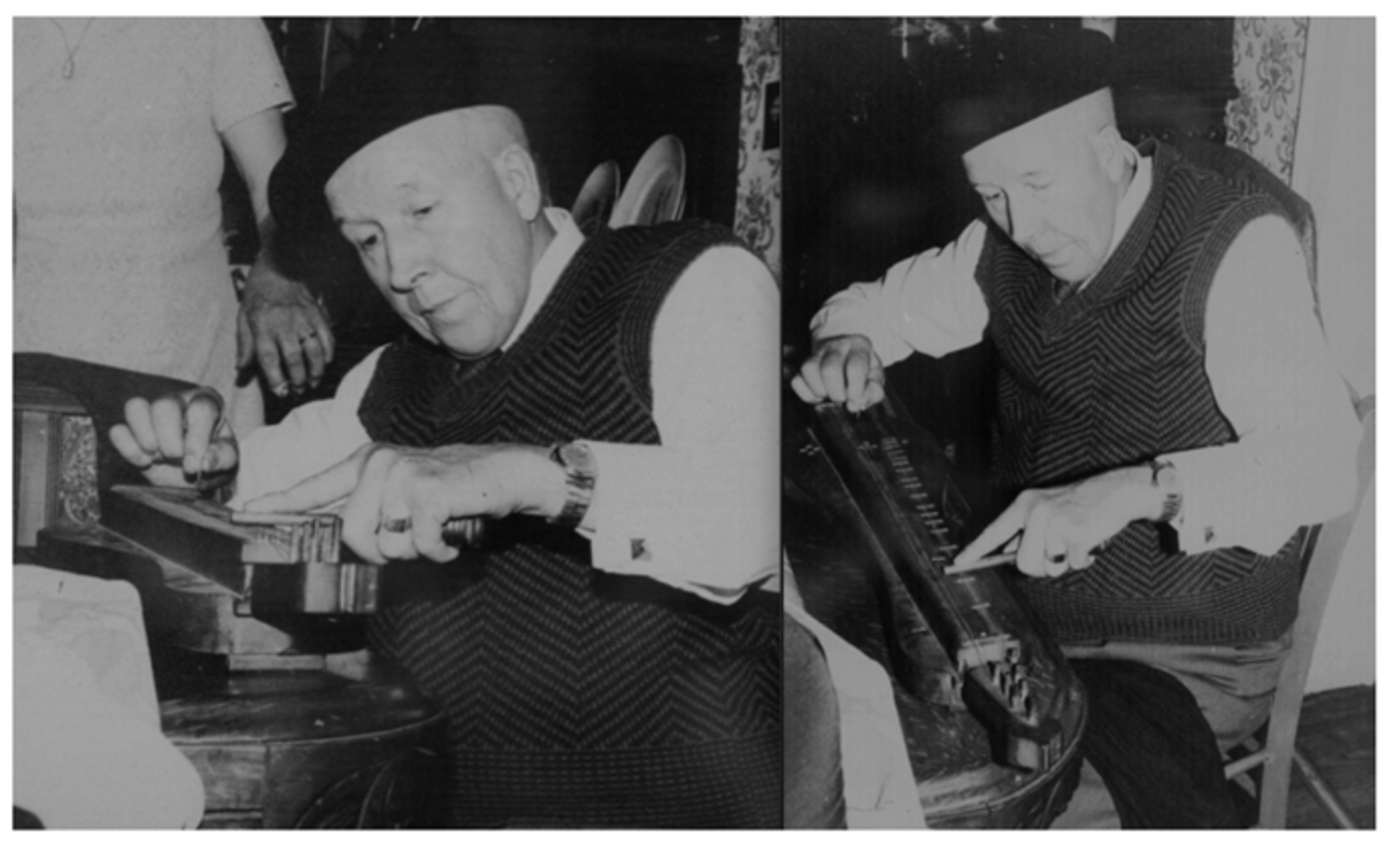
The carillon
Carillonneur from Dunkerque
For nearly five hundred years, carillons have rung out from the belfries of towns in both French and Belgian Flanders, marking the rhythm of daily life. Alfred Lesecq is one of the last remaining carillonneurs. Carillonneurs played a variety of melodies, some linked to specific local events, others simply popular tunes of the time. Videos of carillonneurs
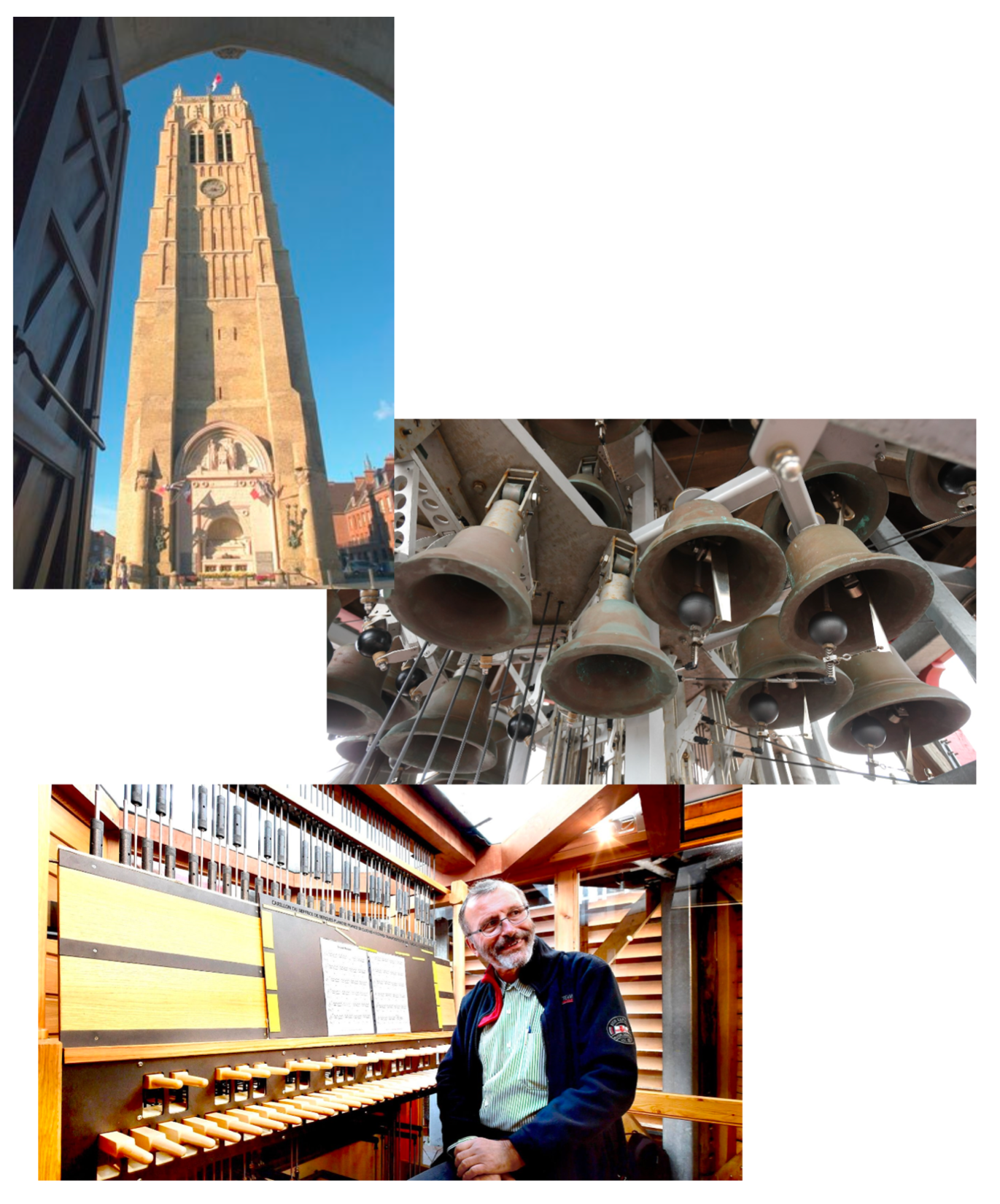
Some reference singers, instrumentalists and groups
Documentary tools:
– Modern day:
- The modern-day carnival: https://www.dailymotion.com/video/xxflfu
- SHILLELAGH – 2015 – La Gavre: https://www.youtube.com/watch?v=Xg3jPxRpQ6I
– Websites and links:
- The Epiphany Tour (Tournée des Rois Mages): https://www.youtube.com/watch?v=c1mgp30ogCs